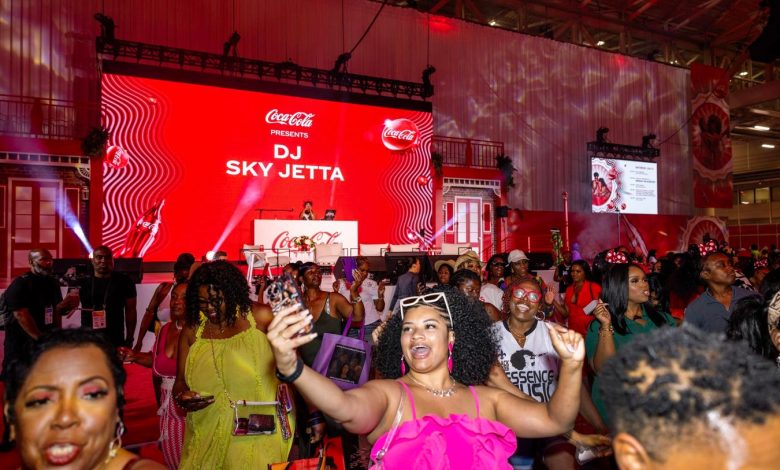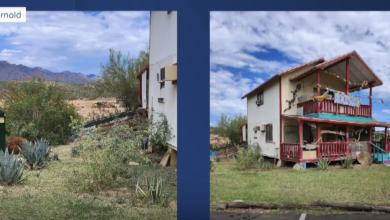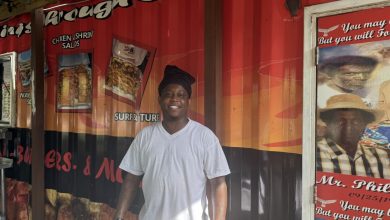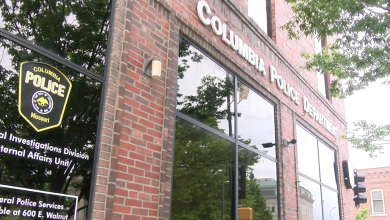How Coca-Cola Bet On Black Joy—And Won

Close-up image of Essence Festival of Culture attendees during a DJ Sky Jetta session.
When mega brands consider their return on investment, they typically reference familiar metrics, including market share gains and customer acquisition costs. Stephanie Eaddy, Coca-Cola’s Cultural Marketing Lead, speaks this language fluently. She can identify the methodical approach her company uses to measure sponsorship ROI, from sales lifts to program engagements with customers and bottlers. She understands which key performance indicators drive market share data but also knows that behind every data point lies an authentic connection.
Some partnerships create value that compounds over decades rather than quarters, and Coca-Cola’s partnership with the Essence Festival of Culture represents this type of commitment, one that has shifted the benchmark of what is possible with culturally attuned marketing.
“It starts with our 30-year celebration as Presenting Sponsor at The Essence Festival of Culture and continues with a focus on creating experiences that celebrate sisterhood, joy, and cultural pride while amplifying community voices,” Eaddy said. “We carefully crafted immersive activations, panel discussions, musical performances and partnerships with Black-owned businesses from the SOKO Market that take our participation at the festival well beyond a brand moment and more into a celebration of Black culture.”
This festival-centered approach is specifically anchored in the South, where Black women wield market influence and cultural authority.
“If you notice across the U.S., particularly the Southern States, you will see shopper marketing programs in retail and at restaurants offering a sweepstakes for a free trip for you and two friends to The Essence Festival of Culture,” Eaddy said. “Each of these commercial tactics has a set of KPIs, such as brand health, share and first-party data capture. Beyond financial metrics, Coca-Cola focuses on curating meaningful experiences that uplift and celebrate cultural pride. The focus on authenticity, through activations like the ‘Summer of Uplift Block Party,’ strengthens the emotional connection to the community, ensuring our efforts resonate with Black women.”
The partnership between ESSENCE and Coca-Cola dates back to 1995, when Essence Festival was emerging as a cultural touchstone and Coca-Cola was navigating the nascent landscape of multicultural marketing.
When competitors cycled through diversity initiatives with a predictable rhythm, Coca-Cola made a different calculation, and instead of regarding engagement as a campaign tactic, it saw an opportunity to create a legacy partnership powered by authenticity and mutual synergy. And through all of this, Black women remained a driving force behind the company’s strategic decisions, their feedback shaping everything from activation design to long-term partnership evolution.
“Feedback from Black women is pivotal in shaping Coca-Cola’s activations, influencing everything from program design to partnerships,” Eaddy said. “We incorporate trends into our annual planning process, but we also conduct research to understand where we got it right and how we can improve, and it is one of the reasons why we continue to bring back fan favorites like Coke Karaoke, musical performances, and that gorgeous Coca-Cola giveaway bag.”
This feedback-driven approach has also guided the company’s expansion into community partnerships and collaborative storytelling.
“We work collaboratively with ESSENCE each year to refine how we want to show up together. Coca-Cola always strives to deliver a best-in-class festival experience; that is why we partner with the best in the business across creative, experiential, media and production agencies to challenge one another year after year to deliver a can’t-miss experience,” Eaddy said. “Inviting influencers to join us in the storytelling really helped take the story out of the convention center and make it a true conversation piece. Today, you can see how much visibility we get through the social media coverage from D-Nice to artists like Mariah the Scientist.”
That social media gravitas has created an organic advocacy among influencers who view the partnership as well-informed rather than transactional. Funmi Ford, an Alabama-based lifestyle influencer who has attended multiple festivals, shares this sentiment and believes that other brands can learn from Coca-Cola’s playbook.
“I love that Coca-Cola, such a quintessential American brand invented in Georgia, has helped power and partner with Essence Fest since 1995,” Ford said. “It has been a 30-year commitment that allows Essence to celebrate Black American culture in all its beauty, resilience and power. I hope more brands that celebrate Black culture will see what Coca-Cola has done and join in on the largest African American music and empowerment event in our country.”
Boston-based influencer and fashion stylist Koko Dubuisson also echoed a similar perspective on the partnership’s consistency. “I think Coca-Cola’s longstanding partnership with Essence Fest has definitely been beneficial over the years. It’s brought a consistent brand presence that everyone recognizes,” she said.
The emphasis on recognition speaks to what marketing executives call “mental availability,” the degree to which a brand comes to mind in relevant purchase or consumption moments.
The longevity itself has become a form of social currency. Kanesha Davenport, a Baltimore-based fashion and beauty influencer, articulates this value.
“I believe Coca-Cola’s partnership with Essence shows their commitment to everything ESSENCE and Essence Fest represent, especially now when so many of us are skeptical about who really is an ally,” Davenport said. “It’s more than a brand partnership but also a 30-year commitment, investment, allyship and relationship.”
This year, Coca-Cola also expanded its community impact initiatives and welcomed the YWCA to the convention floor for the first time, enabling the organization to discuss WE360, a program funded by The Coca-Cola Foundation to offer training and development opportunities to women entrepreneurs. The choice of venue amplifies these efforts.
New Orleans has become the optimal backdrop for this cultural investment, and the city’s position as a cultural and economic hub for the Black community has made it a core part of Coca-Cola’s broader market strategy.
“New Orleans’ rich history as a cultural and economic hub for the Black community makes it an ideal destination for the Essence Festival,” Eaddy said. “The city’s vibrant atmosphere and large economic impact provide a dynamic backdrop for the celebration of creativity, commerce, and culture.”
Last summer in New Orleans, the Essence Festival of Culture generated over $346 million in local economic impact, part of nearly $1 billion in economic activity the festival has created over the past three years. Each activation across the Southern states feeds into a broader measurement framework.
But this partnership also raises questions that other brands should consider. Coca-Cola’s success at ESSENCE may be difficult to replicate because it began in 1995, when cultural partnership opportunities were less crowded and consumer skepticism was lower. Today’s brands face an audience that has witnessed decades of performative diversity initiatives, especially in the post-pandemic era, and this can make genuine entry points more challenging.
Multiple Coca-Cola brands, including Smartwater and Simply Lemonade, have stayed connected to the ESSENCE audience through magazine partnerships, online platforms and social media engagement. This sustained relationship model has deepened brand affinity and driven purchase behavior across multiple touch points.
Coca-Cola’s approach demonstrates how major corporations can build authentic relationships with specific communities while achieving measurable business objectives. For business leaders struggling with cultural competency, especially in the era of DEI fatigue, Coca-Cola and ESSENCE’s layered partnership offers a key, instructive lesson: For any partnership to be sustainable, it must evolve in a way that reflects broader changes in what customers expect, particularly younger, socially conscious consumers.
“Coca-Cola is over 139 years old, so we are always looking for ways to remain relevant and top of mind, but what I think is so special about our brand is that it stands for optimism and delivers joyful moments that everyone can enjoy,” Eaddy said. “The secret to our success is staying true to who our brand is, telling great stories in authentic ways, and showing up in places and spaces where we add value. Today, that is more often in social media, but it is also in real-life experiences like The Essence Festival of Culture, where we can build programming that reflects the multigenerational consumers we serve every day.”
This alignment has also been designed to make a difference among Black women, a traditionally marginalized audience.
“We want to ensure that the ESSENCE woman and the community she leads understand that The Coca-Cola Company and the portfolio of brands we represent are long-standing champions of celebrating Black excellence and joy in ways big and small,” Eaddy concluded.
The partnership’s three-decade run proves both the potential and limitations of corporate cultural engagement, and although Coca-Cola has created measurable community and economic impact over time, it has also raised questions about scalability and market access for other brands seeking authentic cultural connections.




